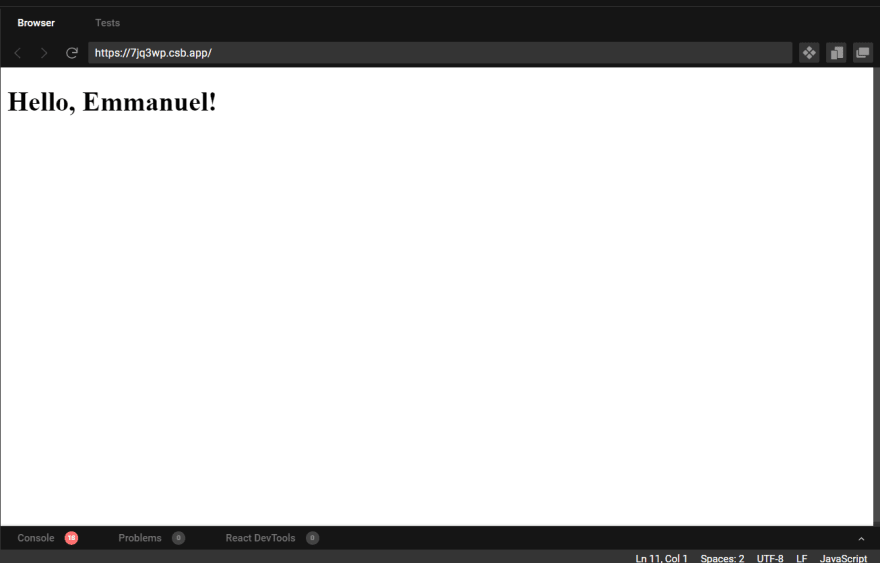React is a popular JavaScript library for building user interfaces, and one of its key features is the use of "props", short for properties. In this article, we will explore what React props are, how to pass data using props and why they are important for building efficient and reusable components.
Prerequisites
Before diving into React props, it is important to have a basic understanding of React and JavaScript. If you are new to React, it is recommended that you first familiarize yourself with the concepts of components and JSX before continuing with this article.
What are React Props?
In React, props are used to pass data from a parent component to a child component. Props are passed to a component as an object, and the component can then access the properties of the object to render the component with the appropriate data.
For example, imagine that we have a parent component called "App" and a child component called "WelcomeMessage". The App component contains an instance of the WelcomeMessage component and we want to pass the value of "name" to the "WelcomeMessage" component so that it can display a personalized welcome message.
Here is an example of how we can pass the "name" prop from the App component to the WelcomeMessage component using functional component:
const App = () => {
return (
<div>
<WelcomeMessage name="Emmanuel" />
</div>
)
}
const WelcomeMessage = (props) => {
return <h1>Hello, {props.name}!</h1>;
}
In this example, we are passing the "name" prop as a JSX attribute in the WelcomeMessage component. The WelcomeMessage component then receives the prop as an argument in its function, and we can access the prop's value with the "props" object.
It is important to note that props are read-only, meaning that a component cannot change the value of a prop passed to it. If a component needs to update the value of a prop, it must instead update the state of its parent component, which will then pass the updated prop to the child component.
Passing Data Using Props
Since react components are reusable, we can make duplicates of the WelcomeMessage component and pass to it some more information as props.
Here's an example:
const App = () => {
return (
<div>
<WelcomeMessage name="Emmanuel" alias="Walkr" />
<WelcomeMessage name="Ogochukwu" alias="Gochman" />
</div>
)
}
const WelcomeMessage = (props) => {
return <h1>Hello, {props.name}! a.k.a Mr. {props.alias}</h1>;
}
In the example above, we added the alias prop to add more information to the WelcomeMessage component, now the component displays the second name each user is also known as.
The Importance of React Props
React props are an essential tool for building efficient and reusable components. By passing data from a parent component to a child component, we can create components that are flexible and can be used in multiple contexts. This allows us to write code that is easy to maintain and test, and it also allows us to create a more modular and scalable application.
In addition, React props enable us to create components that are easy to understand and reason about. By clearly defining the data that a component expects to receive, we can easily understand how a component works and how it can be used.
Conclusion
React props are an important feature of the React library that allow us to pass data from a parent component to a child component. By using props, we can create efficient and reusable components, and make our code easier to understand and reason about. Whether you are a seasoned React developer or just starting out, understanding how to use React props is essential for building high-quality React applications.





Latest comments (3)
Сongratulations 🥳! Your article hit the top posts for the week - dev.to/fruntend/top-10-posts-for-f...
Keep it up 👍
Thank you bruno
For now, I'm only working on the fundamentals of react series
I would still write on useContext, useState and the useReducer Hook.
You can also use Context, which allows you to pass data down through the component tree without having to manually pass props manually at every level, which is what in React is called “prop drilling”, which can be such a messy and complicated approach, in my opinion.
Nevertheless, great article on React Props! :)